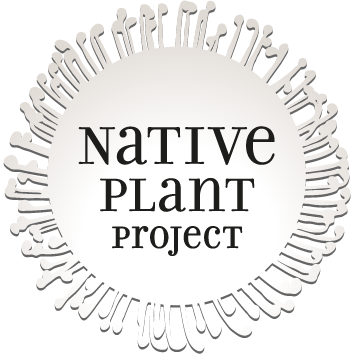- E-Nursery
- WINTER SALE
- Gardens
- The best of Australia’s private and public gardens to inspire your own Native Plant Project large or small.
- Learn
- Tips from native plant experts, growing guides, seasonal gardening diaries and more…
- Projects
- Meet designers, architects, landscapers and creatives engaged in their own native plant projects…
- About
- Contact
Springtime brings colourful reasons to hit the road and enjoy a show only mother nature can deliver. Native Plant Project takes a closer look at a natural wonder only seen a few months every year…
No matter what you have been told, nothing can prepare you for the sheer overwhelming scale and beauty of Western Australia’s spring wildflowers.
How can it be described without collapsing into cliché? Yes, the landscape really is “a riot of colour”, “a blaze of wildflowers”, characterised by “spectacular floral treasures” and “a breathtaking array of different forms and colours”.
But it’s all true. Every conceivable combination of flowers awaits the traveller.



You can gasp in amazement at entire hills covered in swathes of yellow. Stop for a closer look (with camera at the ready) to find the predominant colour masks hundreds of less prominent blooms that await the alert flower lover who paused to look with care.
Flowers that abound in some areas simply don’t exist at all in others. There are places where banksia bushes line the roads. Other locales are characterised by vast washes of colour produced by dense outcrops of everlastings or paper flowers. Some places appear to lack any kind of floral spectacle until you realise there are small flowers such as grevillea on the scrubby bushes and tiny native orchids colouring the grasses.

The facts are also breathtaking. It’s estimated there’s more than 12,000 species of flowering plants scattered across an area of 2.5 million square kilometres stretching from the Pilbara in the north, around the coast to Esperance and inland across the wheat belt as far as Kalgoorlie.
If you want to get your head around the scale of the state’s wildflowers, it is perhaps worth registering that Karratha in the Pilbara is 1557 kilometres north of Perth, Kalgoorlie is 597 kilometres to the east and Esperance is 721 kilometres to the south-east. Not every square kilometre of this vast area is covered in wildflowers, but it is impossible to drive more than 50 kilometres in any direction without either stopping to take a closer look or gasping as entire vistas are coloured by millions of flowers.

There is no image or description that could do justice to the wildflowers partly because, like all things of great natural beauty, the actual experience of an entire hill carpeted in everlastings is something that needs to be seen and partly because the diversity of experiences is so subtle, rich and complex that no single description can capture it…
Perhaps the most resonant image is the juxtaposition of barren, red rocky soils (the sort of places where no self-respecting plant would choose to live) and the splashes of colour produced by the flowers. This is not just dry country. This is real desert: red soil rich in iron oxide with sparse, tough, small bushes fighting for survival, but everywhere are brightly coloured flowers. But only for a few months a year.



It’s all true. Every conceivable combination of flowers awaits the traveller…


So what do you do? Do you overdose or choose a small area? Whether you’re an avid gardener, keen photographer, artist or nature lover there’s a raft of specialist wildflower tours available such is the scale and significance of this seasonal phenomenon, while self drive options open up more leisurely discoveries. All you really need is a sense of wonder. Pick from visiting these key areas:
Kings Park and Botanic Garden in the heart of Perth. Apart from offering sensational views over the Swan River and the business district, the gardens boast a 17-hectare area that has more than 1700 native species of wildflowers. This is, not surprisingly, rather pristine and not very wild, but it does allow you to develop a working knowledge of devil’s pins, kangaroo paws, desert peas, everlastings, starflowers, grevilleas, firebush, a range of orchids and hundreds of other natives. Best seen September-November each year.
Head ‘outback’ to WA’s Golden Wheatbelt region and into Fitzgerald National Park (one of the largest national parks in Australia) to marvel at more than 1,800 species of wildflowers, many of which are rare and unique to the area. Floral displays are through to November.
The Coral Coast from Exmouth down to Cervantes also offers top wildflower viewing spots in the Coalseam Conservation Park, Lesueur National Park, and Cape Range National Park. Enjoy the splendour as early as July through to November including the famed Sturt Desert Pea.
Almost 80 percent of the plant species found in the South West region of WA are seen nowhere else on earth. Venture around Margaret River, Albany or to the dramatic coastlines of Esperance to see over 8000 flower species blooming during the peak season which is October-November each year.
The rugged landscapes of Australia’s North West showcase over 2,000 species of wildflowers. The heavy summer rains nourish the ground from which the beautiful flowers grow, and the rocky surfaces retain water during the dry months to sustain plant life. Best in September.

For more information: www.westernaustralia.com
NPP.














